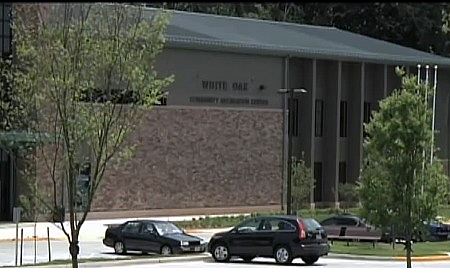
Maryland Second in Nation for Green Building
The U.S. Green Building Council (USGBC) announced that Maryland placed second in its ranking of the Top 10 States for Leadership in Energy & Environmental Design (LEED). The list highlights the regions around the country leading the movement for sustainable building design, construction and operation. Utilizing less energy and water, LEED-certified spaces save money for families, businesses and taxpayers; reduce carbon emissions; and contribute to a healthier environment for residents, workers and the larger community.
“Here in Maryland, we’ve committed to developing and implementing environmentally smart building practices over the last seven years because green development saves money and is good for the environment,” said Governor Martin O’Malley. “We’ve made tremendous progress, but there is still more work to do. By using LEED standards as a benchmark, we’ll continue to build on Maryland’s reputation as a leader in creating a greener, more sustainable environment for future generations.”
“In the face of the extraordinary global challenge of climate change, our national imperative to create resource-efficient and cost-effective green buildings has never been greater,” said Rick Fedrizzi, president, CEO and founding chair, USGBC. “Maryland has a strong base of dedicated individuals who are using LEED to transform its built infrastructure into high-performing spaces that promote the health of our planet and the people who use these buildings each and every day.”
“Maryland is truly a leader for green building, and it’s rewarding to make the top 10 list,” said Mary Pulcinella, executive director, USGBC Maryland Chapter. “However, being recognized is not the end goal — we still hope to see more widespread implementation of green building practices and look forward to the innovative ideas coming from our industry leaders and inspired entrepreneurs.”
The per-capita list is based on 2010 U.S. Census data and includes commercial and institutional green building projects that were certified throughout 2013. Maryland certified 119 projects representing 12,696,429 square feet of real estate, or 2.20 square feet per resident, in 2013.
USGBC calculates the list using per-capita figures as a measure of the human element of green building, allowing for a fair comparison of the level of green building taking place among states with significant differences in population and, accordingly, number of overall buildings.
A few notable projects that certified in Maryland in 2013 include:
- M&T Bank Stadium in Baltimore, home of the Baltimore Ravens, LEED Gold
- The National Oceanic and Atmospheric Administration Center for Weather and Climate Prediction in College Park, designed by USGBC Platinum Member HOK, LEED Gold
- Perdue Corporate Headquarters in Salisbury, LEED Platinum, the first LEED Platinum building in Maryland’s Eastern Shore
- Navy Medical Research Center’s Biological Defense Research Directorate at Fort Detrick in Frederick, LEED Gold
- White Oak Community Recreation Center in Silver Spring, LEED Gold
- USGBC Platinum Member Skanska’s Rockville office, LEED Gold
- Paint Branch High School in Burtonsville, LEED Gold
The full ranking of the top 10 states includes:
| Rank | State | Projects certified in 2013 | Square feet LEED certified in 2013 | Per-capita square footage |
|---|---|---|---|---|
| 1 | Illinois | 171 | 29,415,284 | 2.29 |
| 2 | Maryland | 119 | 12,696,429 | 2.20 |
| 3 | Virginia | 160 | 16,868,693 | 2.11 |
| 4 | Massachusetts | 101 | 13,684,430 | 2.09 |
| 5 (tie) | New York | 259 | 37,839,395 | 1.95 |
| 5 (tie) | California | 595 | 72,729,476 | 1.95 |
| 6 | Oregon | 47 | 6,991,942 | 1.83 |
| 7 | North Carolina | 133 | 17,183,099 | 1.80 |
| 8 | Colorado | 124 | 8,894,187 | 1.77 |
| 9 | Hawaii | 17 | 2,323,379 | 1.71 |
| 10 | Minnesota | 51 | 8,205,155 | 1.55 |
| * | Washington, D.C. | 106 | 19,524,216 | 32.45 |
*Washington, D.C., is not ranked as it is a federal district, not a state.
Collectively, 1,777 commercial and institutional projects became LEED certified within the top 10 states in 2013, representing 226.8 million square feet of real estate. Worldwide, 4,642 projects were certified in 2013, representing 596.8 million square feet.
More than 20,000 projects representing 2.9 billion square feet of space have been LEED-certified worldwide, with another 37,000 projects representing 7.6 billion square feet in the pipeline for certification.

Engage us on Facebook
Follow us on Twitter
Tweets by @mymcmedia